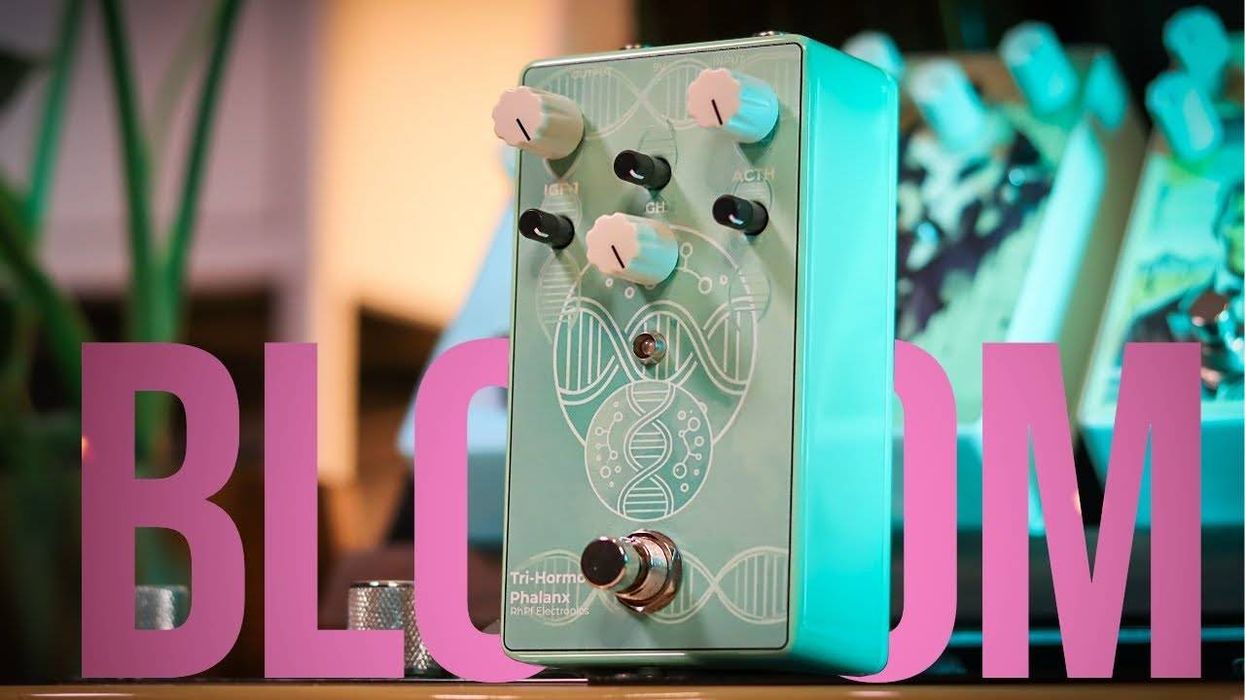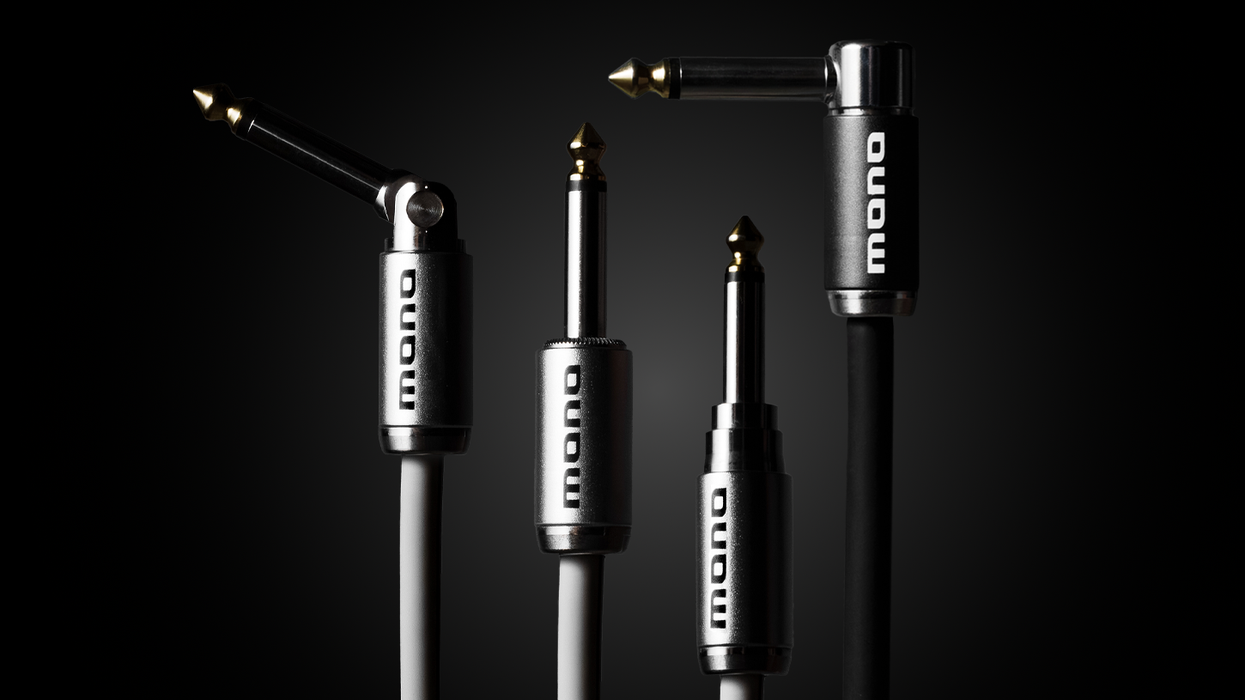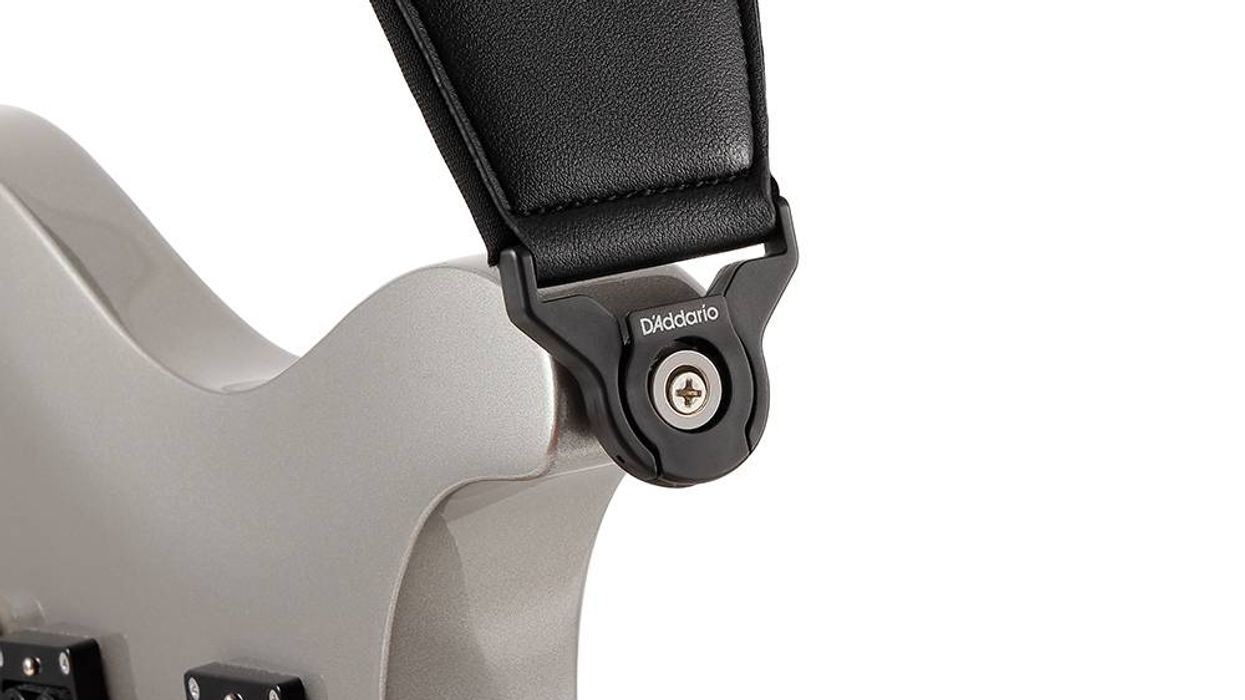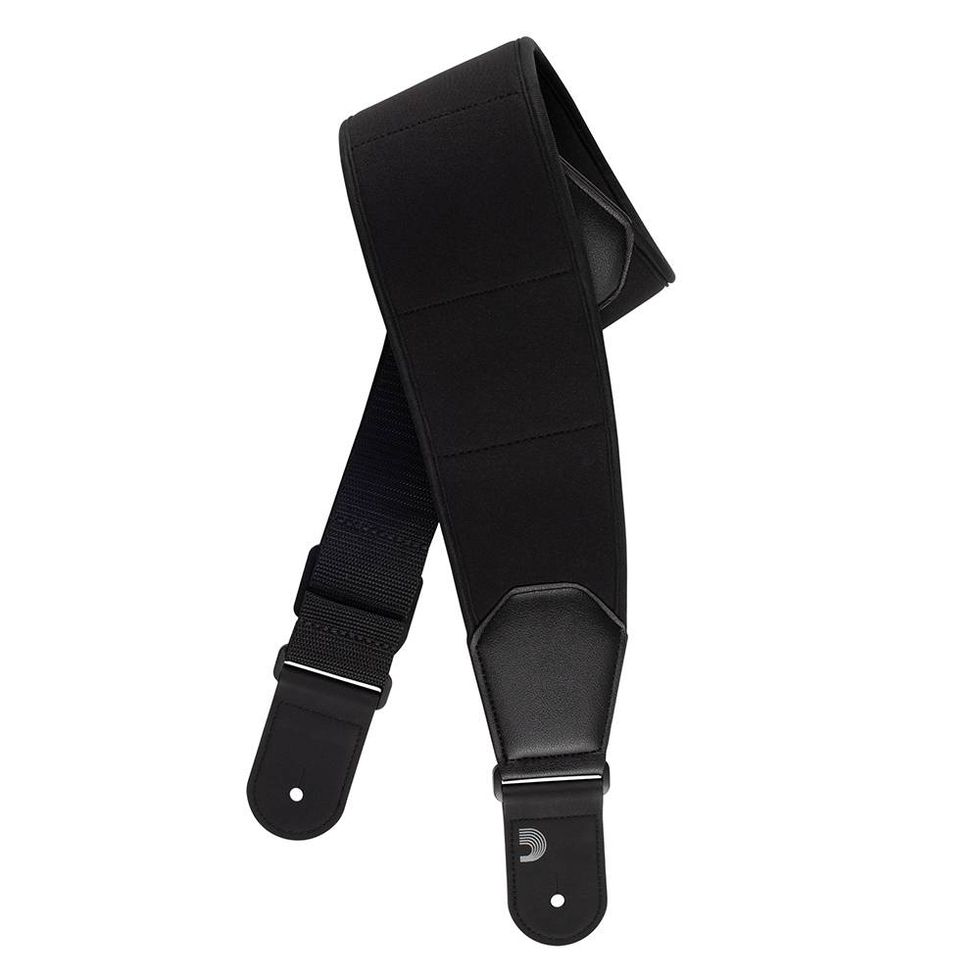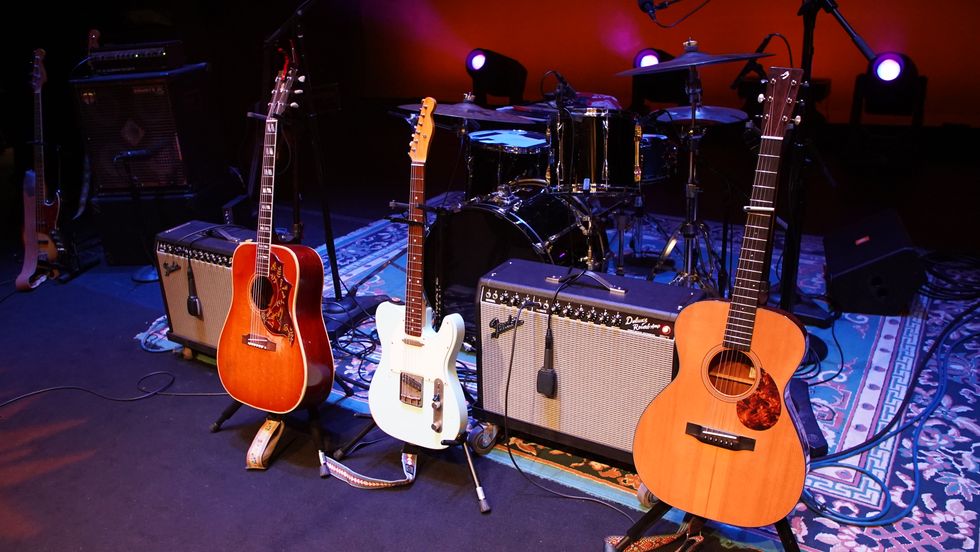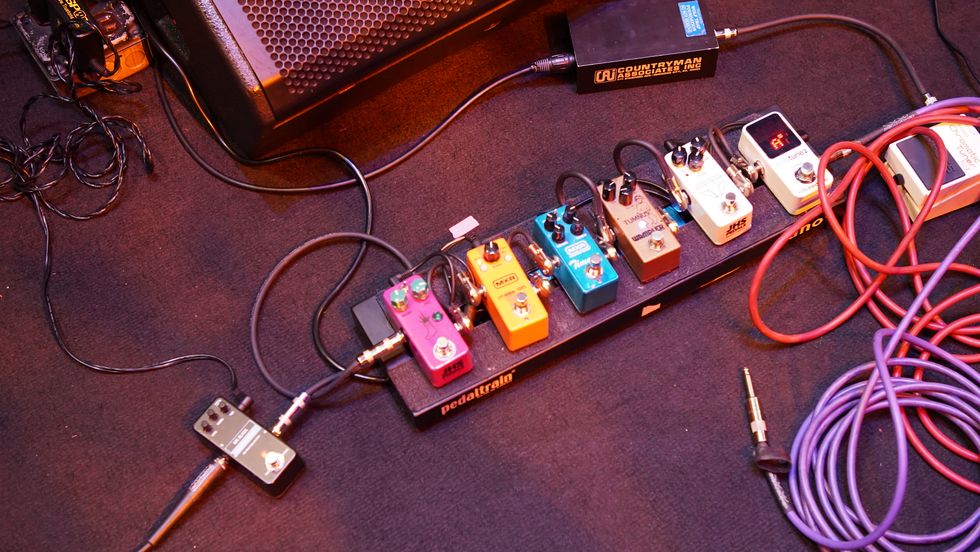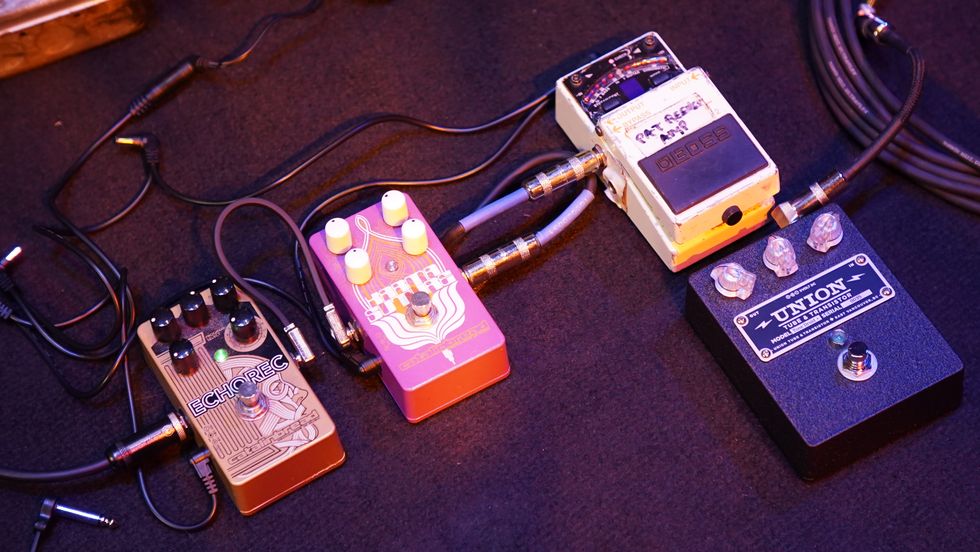| 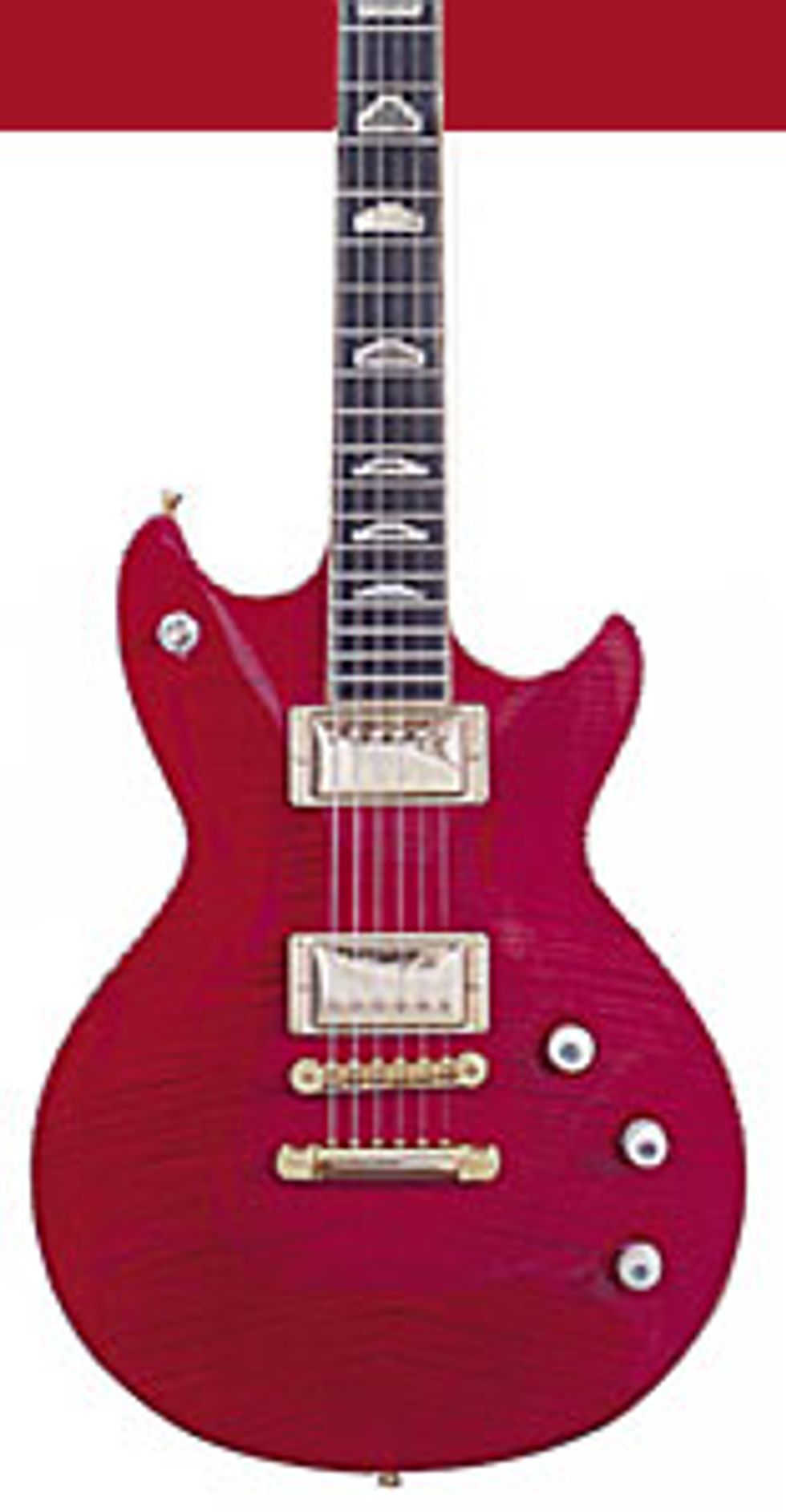 |
First Impressions
The guitar we got our mitts on was the Exhibition Custom Wild Cherry, which features a black wild cherry body, with a beautiful, tiger-striped, Eastern maple top. The neck is a curly maple/quilted maple laminate with black cherry stringers running between the two woods. Topping off the neck is an ebony fingerboard with Birdseye maple binding. Another unique feature of the neck is a volute, effectively strengthening the joint between the neck and headstock. Other niceties include Birdseye pickup surrounds and cover-plates, intriguing deer and elk antler knobs, switch tips and tuner buttons and unique, Southwestern-flavored fingerboard inlays.
To be honest, pictures do not do the Zuni justice. In particular, the antler knobs, and angular fingerboard inlays seem almost overdone and garish in photos, but in person the effect is quite striking, giving the guitar an unexpected, almost understated, charm. It’s as if the over-the-top pieces balance out the gorgeous top, not giving any one element too much visual strength over the other, as can sometimes happen with fancy-topped guitars having otherwise simple elements. All of the little parts come together to make a very attractive whole, with the overall effect being almost organic in appearance.
Picking the guitar up lets you know it is no featherweight, but it isn’t a heavy guitar either – given all of the maple that it contains, it comes in solidly middle of the road. The neck feels nice; once again, not too big, and not too small, with a comfortable, familiar profile – think of a medium Gibson profile. I can’t imagine anyone not getting along with it.
When we first pulled the Zuni Wild Cherry out of its surgical-looking, metallic flight case, it had a touch too much relief. A quick scan of the headstock above the nut revealed no truss rod cover. A glance down toward the end of the fingerboard was also fruitless, but further inspection revealed a tiny hole between the nineteenth and twentieth fret. After a quick call to Michael to make sure I was on the right track, I inserted the provided two-millimeter screw, and an ebony plug popped out, allowing access to the truss rod. I adjusted the rod, replaced the plug, and the access was once again nearly invisible. A nice touch, to be sure.
| “Every aspect of the guitar screams handcrafted” |
Sounding Off
The Zuni features an intuitive control layout, with the pickup selector switch on the upper bout, and two volumes and a master tone right where you would expect them. The tone control is push-pull, allowing coil splitting of the custom, Paul Thielscherwound humbuckers. Tuning up threw me a bit of a curve ball: just as rosewood acoustics tune differently than mahogany, and Strats tune up differently than Teles, it’s been a while since I’ve tuned up a guitar with laminated neck. The Zuni reminded me of an old Firebird I once had – also with a laminated neck, albeit with neck-through construction. It almost fought me while I tried to tune it, but stayed solidly in tune once it was there. That said, I wouldn’t classify it as difficult to tune, just different from what I’m used to.
Plugging in, the Zuni had no problems with an EL34-equipped combo, sounding nice and snarly on the bridge pickup. I found it tonally similar to a P-90, but with the output typical of a humbucking pickup. This guitar really has a lot of clarity, and would be a good choice to drive an effects-laden rig. Through a blackface-type amp, it comes across as a bit bright, preferring Marshall and tweed circuits and the resulting warmth.
Rolling off the tone control while on the rear pickup – my preferred method for approximating Clapton’s woman tone – failed to work here, instead sounding more like a notched wah, which is a cool, if somewhat less useful, tone. It was easy enough to dial in the woman tone with a simple flick of the selector switch, engaging the neck pickup, then backing the tone knob off a bit. With the neck pickup in split-coil mode, rolling off the tone around two-thirds yields some really convincing Strat sounds, not at all what I was expecting. Switching back to the bridge pickup while still in single-coil mode landed us squarely in Tele territory, yet another unexpected surprise. The big bonus here is that the neck pickup really shines for lower gain sounds. I found myself using the neck pickup more than usual, finding it quite articulate, and all the while retaining that familiar neck pickup warmth. So, does the Zuni do classic rock crunch? Yes. Convincing SRV neck pickup sounds? Check. A decent chicken-pickin’ facsimile? Yup.
Which leads us to Zuni’s next surprise. I freely admit that I had many preconceptions about Zuni guitars, and one of them – possibly due to their über-organic appearance – was that they would be more along the lines sonically of an old Les Paul or SG. Imagine my amazement when it handled the high-gain thing with aplomb. For such an idiosyncratic looking machine, this guitar is surprisingly versatile.
The Final Mojo
The Zuni exudes a handcrafted charm that belies its initial flashy appearance. Closer inspection indicates how much of this instrument is truly handmade. The fingerboard inlays are done by hand. The neck is shaped by hand. Every aspect of the guitar screams “handcrafted,” and it is evident that the guitar was crafted by people who love beautiful wood almost as much they love guitars.
Zuni Custom Guitars
zuniguitars.com
Our expert has stated his case, now we want to hear yours. Log on to premierguitar. com, click on “Forum” and share your comments and ratings.
